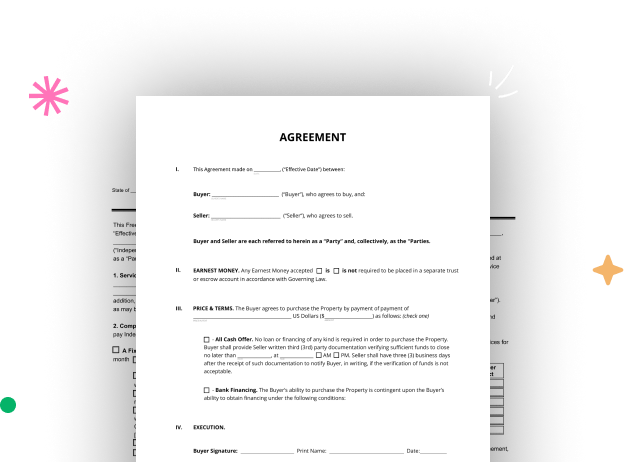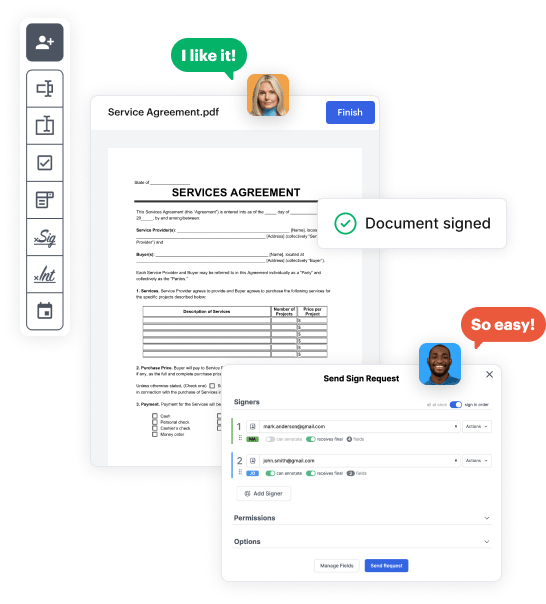

First, log in to your DocHub account. If you don't have one, you can simply sign up for free.
Once signed in, navigate to your dashboard. This is your main hub for all document-based processes.
In your dashboard, choose New Document in the upper left corner. Choose Create Blank Document to craft the Rental Agreement Law from the ground up.
Place various elements like text boxes, photos, signature fields, and other options to your form and assign these fields to intended recipients as needed.
Customize your document by incorporating walkthroughs or any other necessary details using the text tool.
Meticulously examine your created Rental Agreement Law for any typos or necessary adjustments. Utilize DocHub's editing capabilities to polish your template.
After finalizing, save your file. You may select to retain it within DocHub, export it to various storage platforms, or forward it via a link or email.